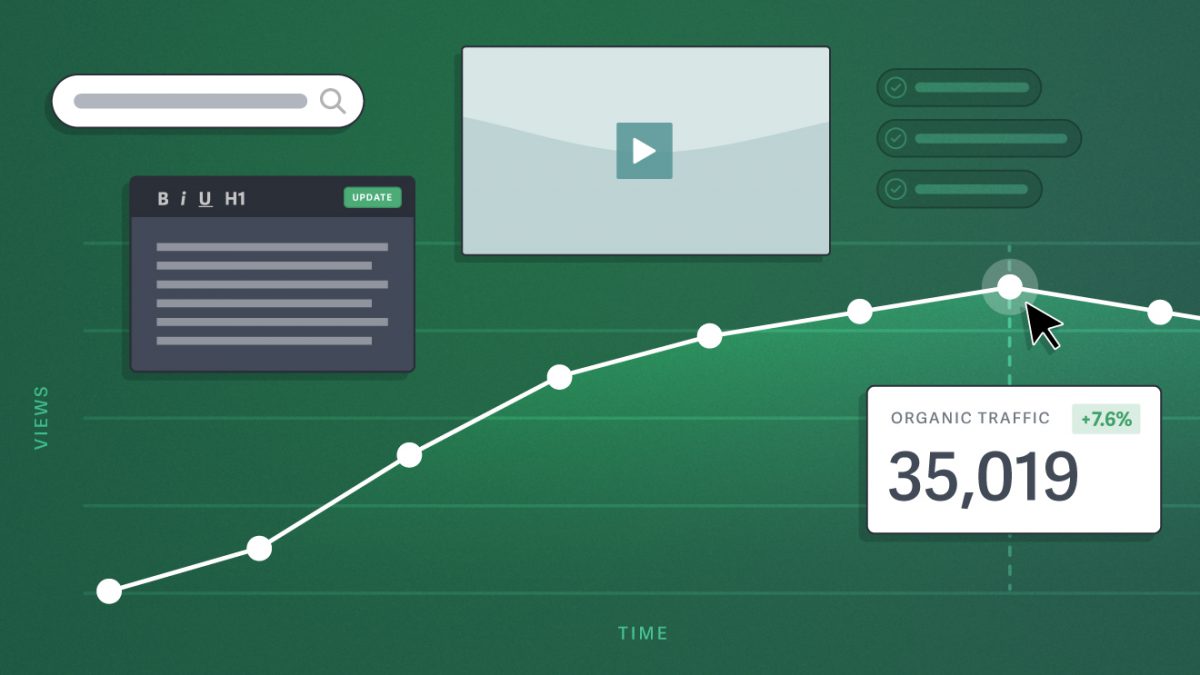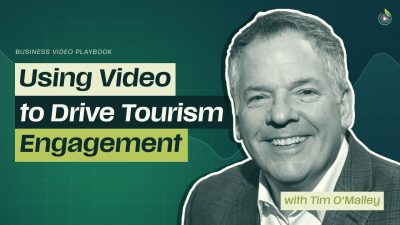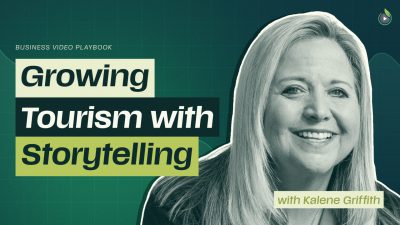Creating content can feel like a never-ending merry-go-round. It takes a lot of work to brainstorm and produce high-quality content that promotes your business faithfully.
Evergreen content allows you to step off the merry-go-round.
Brainstorming and producing high-quality content takes a lot of work. But if the same content produces new leads year after year, the return on investment only improves with time. This is the beauty of evergreen content.
Evergreen content — videos, blog posts, landing pages — produce consistent results long past publishing. Indeed, evergreen topics often gain more traffic with time and topic authority.
Learn how to create a content engine that consistently builds brand recognition, improves search engine rankings, and increases lead generation.
Here are 11 evergreen content ideas (with video examples!) that you can use when planning your strategy, plus tips for getting the most out of your content. Let’s jump in.
Table of Contents
What Is Evergreen Content?
Topics that people regularly search for are considered evergreen.
Evergreen content can gain a sustainable flow of traffic that produces results month after month — often year after year when properly updated — because people regularly search for the topic.
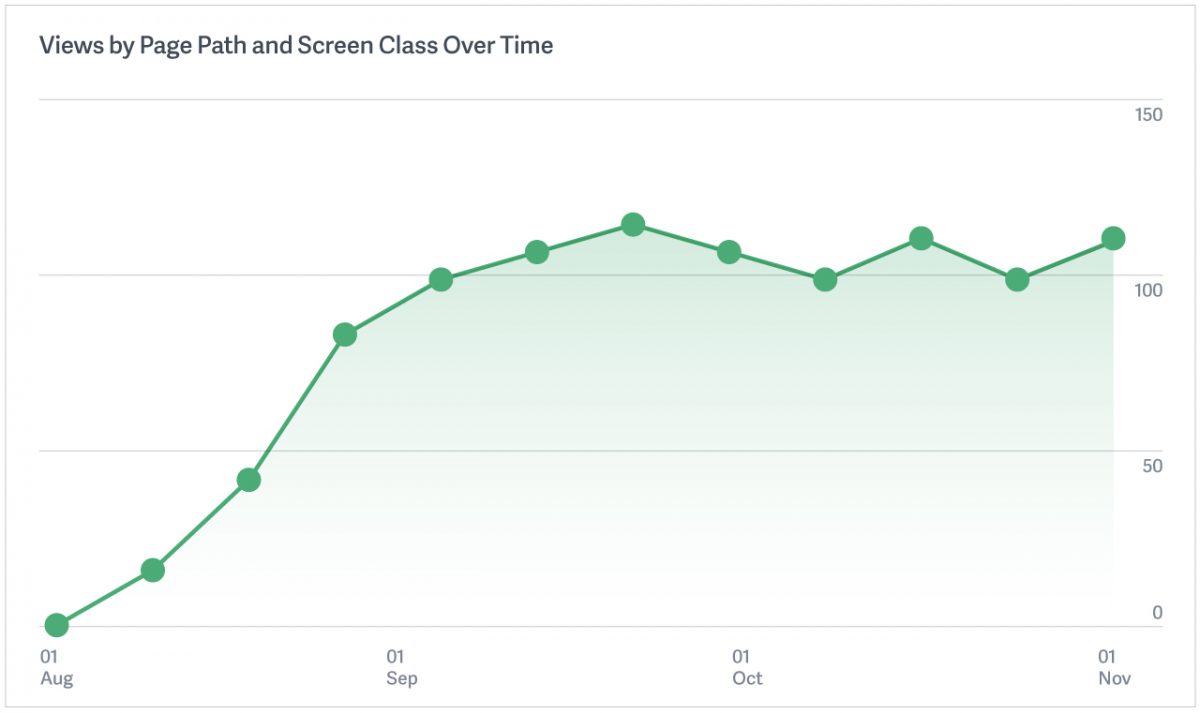
Evergreen content is consistently relevant. Evergreen content that utilizes SEO best practices can rank highly on search engines, making your content discoverable and directly sought out.
Most businesses will (and should) produce both timely and evergreen content. The difference is that evergreen content will continue to generate results, even during months when you don’t publish any new content.
Timely Content
Timely content produces traffic for a short window of time. Also called topical content, these topics can be a large traffic source — especially for brands with significant search engine authority. However, brands that rely on timely content must constantly produce content to stay relevant (i.e., news, entertainment, etc.).
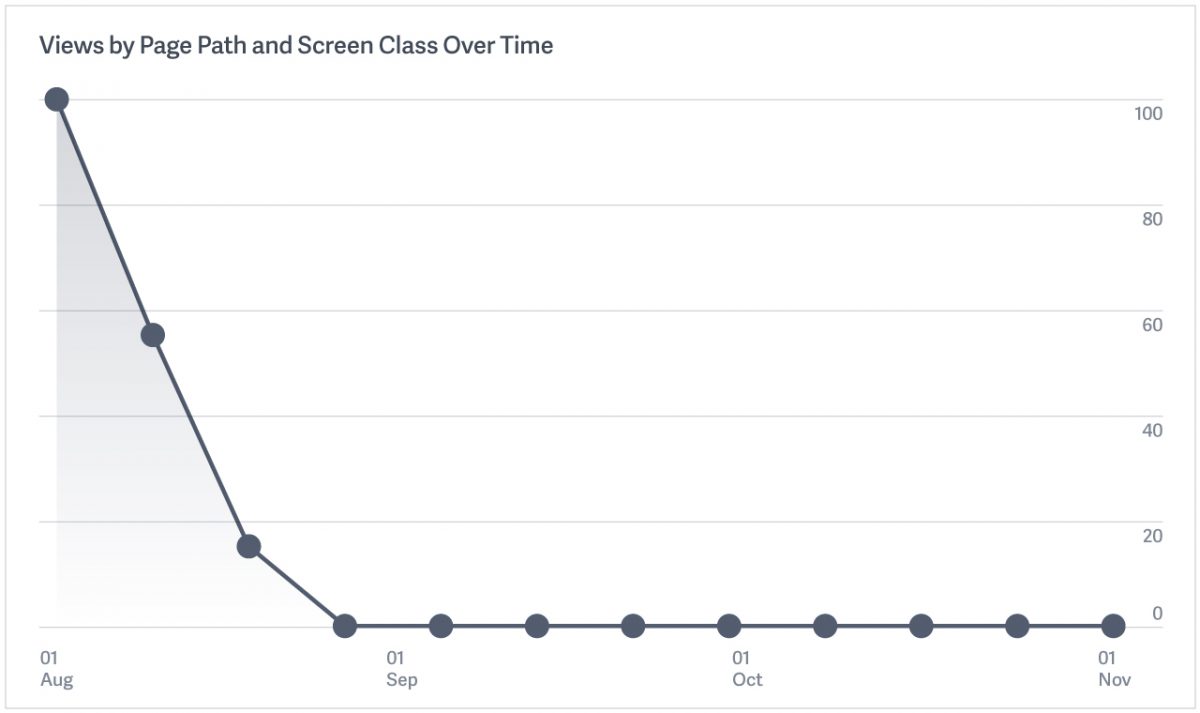
Timely articles receive an initial traffic spike, but traffic recedes with the public’s interest. Conversely, it takes 3-6 months for most SEO-optimized evergreen content to reach its full potential. Successful articles generally receive steady monthly traffic.
Topic Examples: What Is and Isn’t Evergreen?
Evergreen content comes in many forms, including videos, blog posts, landing pages, social media content, and website marketing materials. Discover examples below.
Evergreen Content Examples
- How to Change Your Car Oil (Beginner’s Guide)
- B2B Video Marketing: How to Build A Successful Strategy
- 20 Halloween Costume Ideas with 1990s Nostalgia
- 10 Best Nintendo Switch Games of All-Time*
- How to Record Professional Voiceovers
*Seasonal topics can be evergreen if the content remains relevant year after year.
Note: The topic 10 Best Nintendo Switch Games of All-Time must be regularly updated to stay accurate. The key, however, is that the topic is timeless — the content will only require minimal updates to remain accurate as the best games evolve.
The Opposite of Evergreen: Timely Topics
- 2023 Tech Trends: The Explosion of AI
- The Best Nintendo Switch Games of 2024
- People Are Angry About the New Season of The Bachelor; Here’s Why
- Everything We Know About the iPhone 16 (Release Date, Specs, Camera)
While some of this content could be updated yearly, creating new content on that topic makes more sense because most of it — if not all — will be outdated.
For example, Apple releases a new iPhone every year. Therefore, an article about release rumors is timely, while a video on “How iPhones Changed the World” isn’t going to change drastically year-over-year, making it evergreen content.
How Experts Turn Video Views Into Profit

Tired of videos that feel like a rigged carnival game? Discover expert strategies for turning video into a growth engine across any industry.
How to Determine If a Topic Is Evergreen
Ask yourself, “will this video, blog post, or landing page be as relevant in one year as it is today?” In other words, will people still search for this topic in a year, and will this article contain the information they are looking for when they do?
If the answer is yes (with regular but minimal updates), it is likely an evergreen topic.
For example, “20 Halloween Costume Ideas with 1990s Nostalgia” will probably only receive traffic during the fall season, but the content will remain relevant every year. There’s no need to create a new list of 90s costume ideas; therefore, the topic is evergreen.
11 Evergreen Content Ideas (with Examples)
We’ve established that evergreen content is an important part of any content strategy. Not only does it provide useful information for potential and existing customers, evergreen topics build a loyal following, showcase thought leadership, and boost your website’s SEO.
One challenge, however, is coming up with evergreen content ideas. We’ve compiled a list of the most popular kinds of evergreen content to help spark your creativity. Consider your target audience, brand voice, and business’ ‘why’ as you read through the examples.
1. Explainer
Explainer videos are a great way to showcase your product or service and contextualize its importance for viewers. Regardless of form, this type of content is important for communicating to consumers and clients why your business exists. Explainer videos are created for sales and marketing and found on company landing or home pages.
📹 How We Produced an Explainer Video for Under $4k
2. Educational (How-to)
Build trust and loyalty with an audience in any niche by providing helpful content. Provide guidance directly related to your product with beginner guides and how-to videos.
Whether your business produces organic snacks for babies and toddlers, sells one-on-one fitness coaching services, or offers local videographer services, there is informative content you can create to help your customers.
Brainstorm brand-specific content ideas and determine what information your audience needs to fully utilize and appreciate your product offerings. Optimize educational content for search engines to generate organic traffic and regularly engage visitors. How-to content can effectively produce new leads as part of a content funnel.
📚 Four Steps Toward the Perfect Educational Video
3. Testimonials/Customer Spotlight
Testimonials serve as valuable evergreen social proof on your website and sales pages. They are an easy way to showcase your company’s value to potential customers.
A modern take on the testimonial that’s become increasingly popular is the customer spotlight. Instead of directly promoting your business, allow the potential customer to put themselves in the shoes of someone who has already successfully used your service or product.
📌 How to Get Great Customer Testimonials on Camera
4. Best Practices
Highlight your authoritative knowledge on a subject in your industry with best practices and valuable tips. “How-to” content meets beginners where they’re at, while “best practices” assume the audience has a preliminary understanding of a topic but wants more detailed information.
Within your content strategy, best practices content could include featuring the work of others (as well as your own work), sharing resources that your audience will find helpful, and interviewing experts in the field who have already established credibility. However, it may also simply be a how-to article with a definitive stance on the best method of execution.
5. Complete Guide
Complete guides cover all the related questions under a broad topic. These tend to be long-form videos — or a series of videos — and articles with word counts of 3,000 and well above.
When positioned for SEO, guides cover general keywords with big traffic and competition (generally), as opposed to long-tail keywords with less traffic and competition.
These guides are often high-value in a content strategy because they cover a central topic important to your target audience. These pages generally bring in more traffic than other pieces of content combined, so marketers call them “pillar pages.”
For a series of videos, you might collect viewers’ emails to receive the next installation automatically. In this way, ‘complete guides’ make for great top-of-funnel content that perform reliably.
6. About Us
‘About Us’ content allows a business to tell its story, share its mission, and highlight the people who make it happen. Whether in video form or as a page, this evergreen content can be shared across marketing channels and even leveraged as a recruiting tool.
Highly effective ‘About Us’ pages and videos serve as marketing tools by telling the story of why a company exists and how it came to be. Oftentimes, stories on the why and how of a company are more compelling than sharing the who or what.
💅 Nailing Your Company’s “About Us” Video
7. Case Study
Case studies allow your company to showcase successful results, challenging projects, and outright failures — while providing advice on how others can overcome the same obstacles (often by using the company’s products or services).
Interview participants for more hard-hitting content. Consider incorporating visual elements to explain complex concepts or showcase data points. Case studies are also highly effective in increasing brand trust: the transparency combined with in-depth information provides a valuable resource when positioned for your target audience.
Another approach is to highlight a customer or client’s ‘before’ and ‘after’ experiences that resulted from using your services or products. This strategy allows the case study to double as a customer spotlight, although it would include more concrete information on what has changed and how it affected ROI.
Note: Case studies and customer stories are similar types of content. So much so that brands often use these terms interchangeably. However, case studies are data and product-focused, while customer stories use storytelling to convey the benefits of a product.
8. White Paper
White papers are data-driven essays that explain a problem and feature the company’s solution. They are generally downloadable PDFs featuring technical and in-depth information, helpful diagrams, a company’s methodology, factual evidence or data, and casual persuasiveness geared at marketing the company or its proposed solution.
Consider creating videos highlighting your white papers’ most important and compelling information to encourage downloads and engagement with the material. As the video concludes, use CTAs or a post-play screen to direct users to the downloadable white paper.
9. “Best of” and Other Lists
Imagination is the limit when it comes to brainstorming list ideas. There’s plenty to cover across industries and niches, so this evergreen content is extremely common.
This evergreen content covers the “best of,” or “most popular” for a particular keyword. It can highlight the benefits of a product or service, avoidable pitfalls, or pros and cons. Lists include buyer’s guides, top ten articles, and recap compilations.
10. Product or Service Reviews and Comparisons
Review or compare popular products or services within your niche or industry. It allows you to discuss the technical details of competing products while showcasing your expertise within a side-by-side matrix.
This approach may be unabashedly biased, often using the topic to showcase directly why your company is better than the competition. Use product comparisons to create videos, blog posts, and marketing landing pages highlighting why and how your product or company is superior.
It’s also a great opportunity to build search engine authority by ranking for the main keywords related to a company. Additionally, the landing page can double as a destination for paid ads.
Keep in mind that some product reviews are more evergreen than others. Trending consumer items, for example, may gain a lot of attention upon release that’s not sustainable. While the content will remain accurate and relevant, fewer people may search for it.
11. Project Checklist or Toolkit
A checklist provides a step-by-step reference for completing a project. Similarly, curating a toolkit can be extremely helpful for people who aren’t sure what equipment is necessary and what can wait.
With either type of evergreen content, focus on developing helpful resources for people at various stages of expertise within your niche or industry. Also, do keyword research to determine how people seek this information.
Note: Offer a downloadable version of your checklist or toolkit in exchange for the viewer’s email address. Free, valuable resources can grow your email list while generating new leads.
Bonus Tip: Offer a PDF downloadable version of your checklist or toolkit in exchange for the viewer’s email address. This will help grow your email list while generating new leads.
How to Get the Most From Your Evergreen Content
1. Brainstorm Topics Using Why, How, and What
You can gain significant traffic with stellar content, but visitors will only become customers if the topics are directly related to your business. Instead of using keyword research to inform what topics you should write, consider your target audience, services and products, and brand tone.
A customer survey is another way to learn what content is valuable to your audience. Potential customers are likely seeking the same content that current customers request.
For example, we learned from our customer survey that customers prefer help articles, blog posts, and 10-minute or less micro-learning videos focused on video creative, asset management, operations, distribution, security, and measurement. This knowledge helps us prioritize our editorial and distribution plan for the next year.
2. Provide Genuine Value to Your Audience
Content that is a thinly disguised veil for marketing does not work. The goal is not for someone to watch your video or read a blog post and immediately buy what you have. That would be great! But more often than not, consumers seek to build trust in a brand before making a purchase. The quickest way to build trust is to freely provide valuable information.
3. Do Keyword Research for All Topics
Once you have a collection of topics, research keywords to determine the viability of your topics. Use this information to position your content in the way people are searching for it — rather than as a test determining whether it’s worth creating.
For example, a topic idea for “Video is SEO Gold” becomes “How to Optimize Video for SEO.” Or better yet, “SEO for Video Marketing,” because the competition is lower. A video’s title should clearly state the value of the video using keywords that people commonly search.
4. Combine Content Types for Maximum Reach
Google provides multiple options for how to find content when searching. The default search engine results page (SERP) features numerous elements, including blog posts, landing pages, and videos. However, people can click on the Images or Videos tab (among others) to search. Furthermore, content is prioritized differently within each tab.
Feature multiple types of content on the page and include best SEO practices for all aspects of that content to optimize your content for organic reach. For example, a blog post on ‘How to Create a Vision Board’ could include a video how-to, complete instructions in text, and an image for each process step. Metadata is essential for communicating this information with search engines.
5. Be the Authority (Outdo the Competition)
Review what the competition has created when researching topics. If you can create a more valuable resource, the content will likely succeed (this likeliness increases with brand authority on Google). Strive to create more helpful and in-depth content than the competition. When your content is easy to absorb and highly informative, it becomes easier to rank and convert traffic into leads.
6. Update Your Successful Content Regularly
Even evergreen content can become outdated. It’s good practice to update successful content regularly. You can also use analytics to ensure the content performs as expected. Investigate whether it has become outdated or usurped by a competitor if the content begins to receive less traffic than it usually does monthly.
7. Crosslink Evergreen Content
The more evergreen content you create, the more it will overlap with other content. Link to past relevant content you’ve created whenever discussing similar or umbrella topics. This internal linking encourages visitors to navigate your websites. This behavior is tracked by search engines and represented in Google Analytics as an Engagement Rate. This metric is useful for determining whether visitors quickly leave or learn more about your brand.
8. Don’t Be Afraid to Re-share Evergreen Content on Social Media
One of the major benefits of evergreen content is the ability to continue sharing it with new followers and customers who will find value in what you’ve created. Be sure to re-promote content to your audience after updating it. Even those who have read it before may revisit it to discover new helpful information. Also, don’t be afraid to reshare content you haven’t updated — just ensure the information is still accurate before you do.
Ready for more guidance and inspiration?



